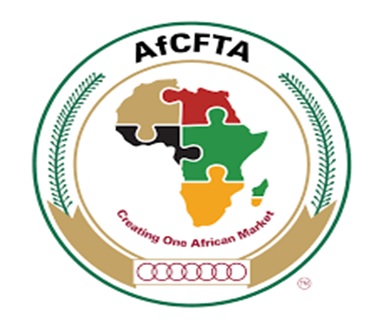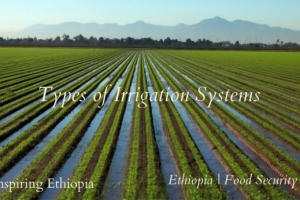
BY DANIEL ALEMAYEHU
The objective of creating job opportunities for certain people is the core agenda for many countries. It is the fact that the continent of Africa is labeled as the youngest continent in the world according to a report from Statista. It is also reported that 207 million African children are aged 0-4 years. The total population of Africans aged 17 years and below is approximately 650 million in 2021. On the other hand, the report stated that only around 48 million people are aged 65 years and above in Africa. The same report further elaborated that in 2022, the population of youth aged 15 years and younger covers 40 percent of the total population.
Based on the above data, Africa is labeled as the home of the young population. In this regard, leaders of African countries are working tirelessly to address the needs of the people. In most countries, the idea of job creation is one of the core issues raised by different stakeholders. Accordingly, it is very essential to create a kind of platform that can save the generation and bring them to have a job. This is the reason why regional integration and trade partners in Africa are implemented and most African youths are benefited.
As briefly stated on the African Continental Free Trade Area (AfCFTA) website, the continental free Trade area is the largest free trade area in the world bringing 55 African countries of the African Union together coupled with eight regional economic communities. The notion of the AfCFTA is to create a single continental market that incorporates around 1.3 billion people with a combined GDP of approximately 3.4 trillion USD. This project is one of the major projects stated in Agenda 2063 of the African Union. It is also used as a tool to transform the continent into a global powerhouse.
AfCFTA is, as to the website, responsible to eliminate trade barriers and boost intra- Africa trade. It is also accountable for advancing trade in value-added production across all service sectors of the African economy. It also helps to establish a regional value chain in Africa, enabling investment and job creation. The practical implementation of the AfCFTA has the potential to foster industrialization, job creation, and investment, thus enhancing the competitiveness of Africa in the medium to long term.
By the same token, based on the data from the United Nations Economic Commission for Africa, the objective of the Regional Integration and Trade Division (RITD) is to contribute to effective regional cooperation and integration among member states. The division also aims to support efforts towards deepening regional markets, enhancing transboundary cooperation, boosting intra-African trade, accelerating industrialization, fostering market institutions, and tackling the challenges of structural transformation.
In the present climate, the African Continental Free Trade Area (AfCFTA) is achieving its set goals by bringing better outcomes for the African people. Regarding job creation, AfCFTA is productive according to youths who are benefited from it. It has become an opportunity for the young people of Africa. It opens doors to the action that helps to increase the continent’s industrialization and economic transformation through implementing entrepreneurship.
Based on the AfCFTA youth protocol, acknowledges that young citizens of Africa can play a critical role in the realization of the free trade zone by performing youth-led initiatives in agriculture, financial technologies, Information Technology, and creative industry. Despite the advantages that AfCFTA has created, the youths disclosed that in youth-dominant trade areas critical to the AfCFTA, the challenges of infrastructure gap, lack of access to modern technologies, funding, electricity, and broadband internet keep the youth on the sidelines of the free trade area.
During the online presentation meeting organized by the Regional Integration and Trade Division (RITD) of the Economic Commission for Africa (ECA), nine young mentees who have completed RITD’s “Youth for AfCFTA Mentorship Program” presented their final assignment to senior staff in ECA.
Though the youth participants highlighted that the AfCFTA presented huge entrepreneurship opportunities for them, it is important to remind governments to implement supportive policies and investments to ensure their participation.
Associate Expert in Economic Affairs, Market Institutions Section of the Regional Integration and Trade Division (RITD) at the ECA, Mie Vedel-Joergensen said the mentees who took the “Youth for AfCFTA Mentorship Program” are winners of the competition held in 2022 dubbed “The African Continental Free Trade Area (AfCFTA): What is in it for young Africans?” which was developed by the Youth Alliance for Leadership and Development in Africa (YALDA) in collaboration with the AfCFTA Secretariat, Afrexim bank, the International Trade Centre (ITC), the UN Development Program (UNDP) and ECA. The competition leads to the mentorship program in ECA. In addition, in the competition, participants were expected to develop essays, info-graphics, or animation to communicate the potential impact of the AfCFTA on youth in Africa.
Mentee of the Essay group, Jessica Debby Ndjadila disclosed that young people can influence policy decisions in favor of the AfCFTA in addition to providing labor. Africa’s youth understood the technology enablers of the free trade area such as Information Technology, supply chain management, and financial technology.
Ndjadila said, “African governments should prioritize intellectual property rights protection.” Besides, Ndjadila stressed fiscal policies to drive entrepreneurs into content distribution and the democratization of access to broadband connectivity.
Africa also needs to operationalize the Pan-African Payment and Settlement System (PAPSS), a centralized payment and settlement system for intra-African trade in goods and services developed in 2022. Such a platform would be able to increase the competitiveness of trade and investment in youth-dominated start-ups in Africa. Another group of youth developed an info graphic to highlight the benefits of gender inclusion in the AfCFTA.
It is a fact that Sub-Saharan Africa was losing an average of 95 billion USD annually as a result of gender inequality, the youth felt that investment in mobile and digital solutions can bridge the gender gap in Africa where the proportion of women using the internet was 25 percent lower than men.
A youth whose group developed an info graphic highlighting the opportunity cost of gender inclusion in the AfCFTA, Richard Muraya mentioned, “Implementation of the AfCFTA would increase employment opportunities and wages for unskilled workers and help close the gender wage gap.”
The Director of Regional Integration and Trade Division at ECA, Stephen Karingi, said young people fully understand what the AfCFTA is all about and their information products should be promoted in giving policymakers the right narrative about the free trade area.
Furthermore, the youth have well demonstrated the potential of the AfCFTA and the issues that must be addressed by the protocols developed for the realization of the free trade area, the director concluded
THE ETHIOPIAN HERALD FRIDAY 27 JANUARY 2023




